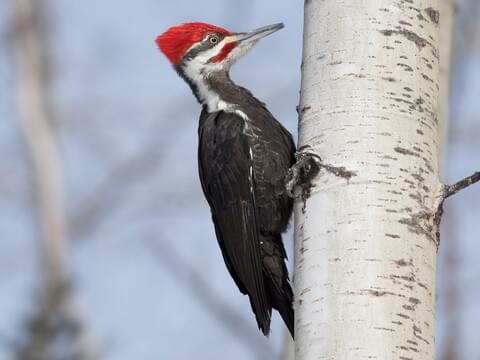Woodpeckers in Florida Population: Types Overview and Preservation
Woodpeckers in Florida Population: Types Overview and Preservation
Blog Article
Introducing the Keys of Woodpeckers: Habits, Habitat, and A Lot More
Woodpeckers, with their one-of-a-kind behaviors and specialized adjustments, have actually lengthy fascinated scientists and nature lovers alike. By discovering the enigmas bordering woodpeckers' habits and environment selections, a much deeper understanding of these bird marvels arises, supplying a peek into their remarkable world.
Woodpecker Behavior Insights
In taking a look at woodpecker behavior, a fascinating screen of specialized skills and adjustments arises, shedding light on their remarkable ecological specific niche. Woodpeckers, understood for their distinct drumming on trees, possess a selection of behavior characteristics that contribute to their survival and success in their setting.
Additionally, woodpeckers exhibit a special feeding behavior identified by their ability to remove bugs from tree bark using their specialized beaks. Their lengthy, barbed tongues aid in catching victim, while their strong neck muscle mass provide stability and precision throughout pecking motions. This feeding technique allows woodpeckers to gain access to covert insect larvae and remove them with remarkable effectiveness.
Environment Preferences and Option
What aspects influence the environment choices and selection of woodpeckers? One vital factor influencing woodpecker habitat choice is the accessibility of appropriate nesting websites. Woodpeckers usually prefer forests with a mix of fully grown trees that give enough possibilities for cavity excavation.
Furthermore, woodpeckers show a preference for habitats with an abundant supply of food resources. They are mainly insectivorous, eating beetles, ants, larvae, and various other insects found in worn out wood or tree bark. As a result, woodpeckers tend to favor wooded areas with a varied insect populace to fulfill their dietary needs.
Additionally, the visibility of dead or rotting trees is an additional vital element in woodpecker habitat option. These trees not just give food sources but also use suitable substratum for dental caries excavation. Dead trees are essential for the maintenance of healthy and balanced woodpecker populations, as they play a vital function in reference the woodpeckers' life cycle and environment dynamics.
Feeding Practices and Diet Plan Make-up
Woodpeckers show a specialized feeding behavior concentrated on foraging for pests within numerous habitats. Their diet regimen mostly includes bugs such as beetles, ants, caterpillars, and crawlers, which they locate by tapping on tree bark and listening for the audio of motion inside. Woodpeckers utilize their solid beaks to drill right into the wood and their lengthy, barbed tongues to extract target from holes. In addition to pests, woodpeckers also consume tree sap, fruits, nuts, and seeds, adding variety to their diet regimen relying on the season and accessibility of food resources.
The foraging techniques of woodpeckers are well-adapted to their arboreal lifestyle. Woodpeckers play an essential function in keeping the health of woodlands by regulating insect populations and helping in the decay of timber.
Drumming Appears and Communication
Using rapid drumming sounds on various surface areas, woodpeckers use an unique form of interaction to signify area limits and bring in companions. This drumming actions is not only a way of communication however likewise functions as a means for woodpeckers to establish their visibility within a particular location. The intensity, speed, and pattern of the drumming can share essential info to various other woodpeckers in the area.
Woodpeckers make use of drumming sounds to announce their existence in a region and to caution off potential intruders. The loud and recurring nature of the drumming functions as a clear signal to other woodpeckers that the location is currently claimed. This helps in minimizing conflicts and decreasing physical confrontations in between people.

Survival Adaptations and Specialized Makeup

Verdict
In final thought, woodpeckers exhibit one-of-a-kind habits, such as drumming audios for communication, and have specialized makeup for survival in their selected habitats. Their feeding routines and diet plan composition better show their versatility to numerous atmospheres. By understanding these facets of woodpeckers, researchers and conservationists can better protect and preserve these remarkable birds and their environments.
Report this page